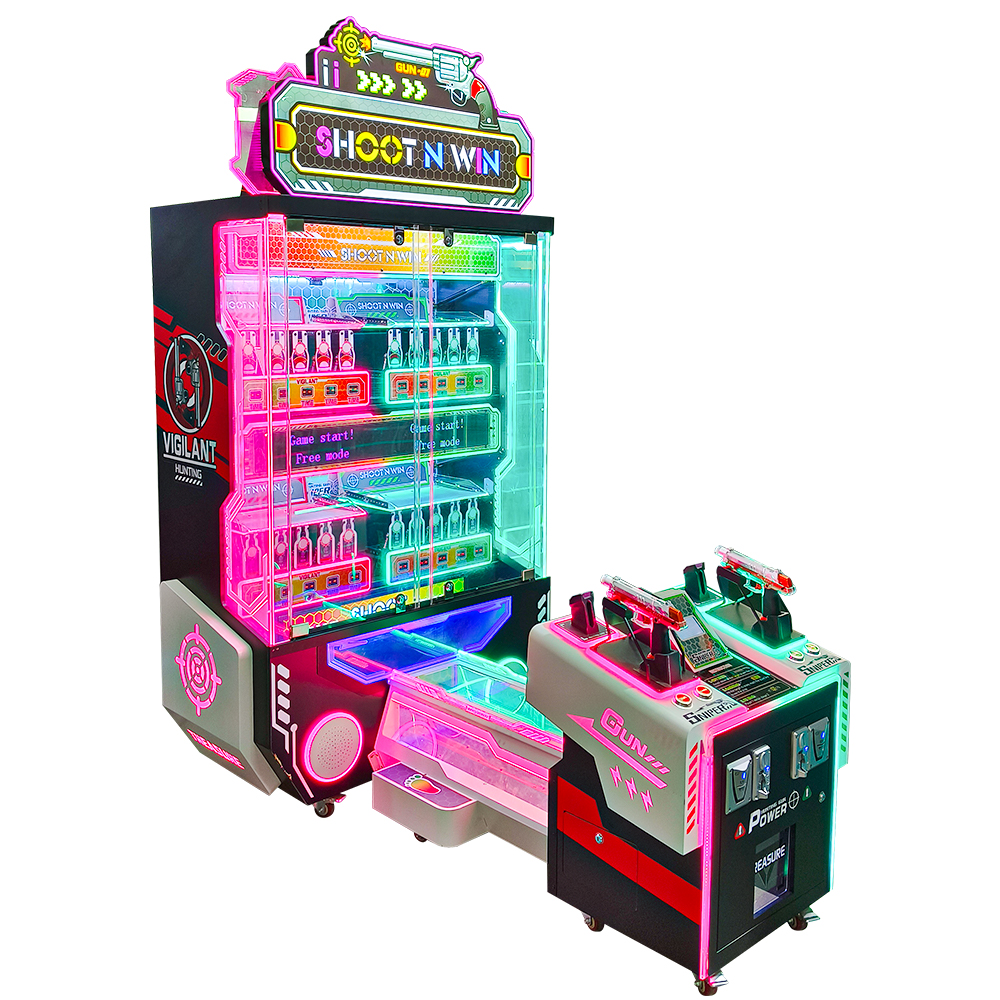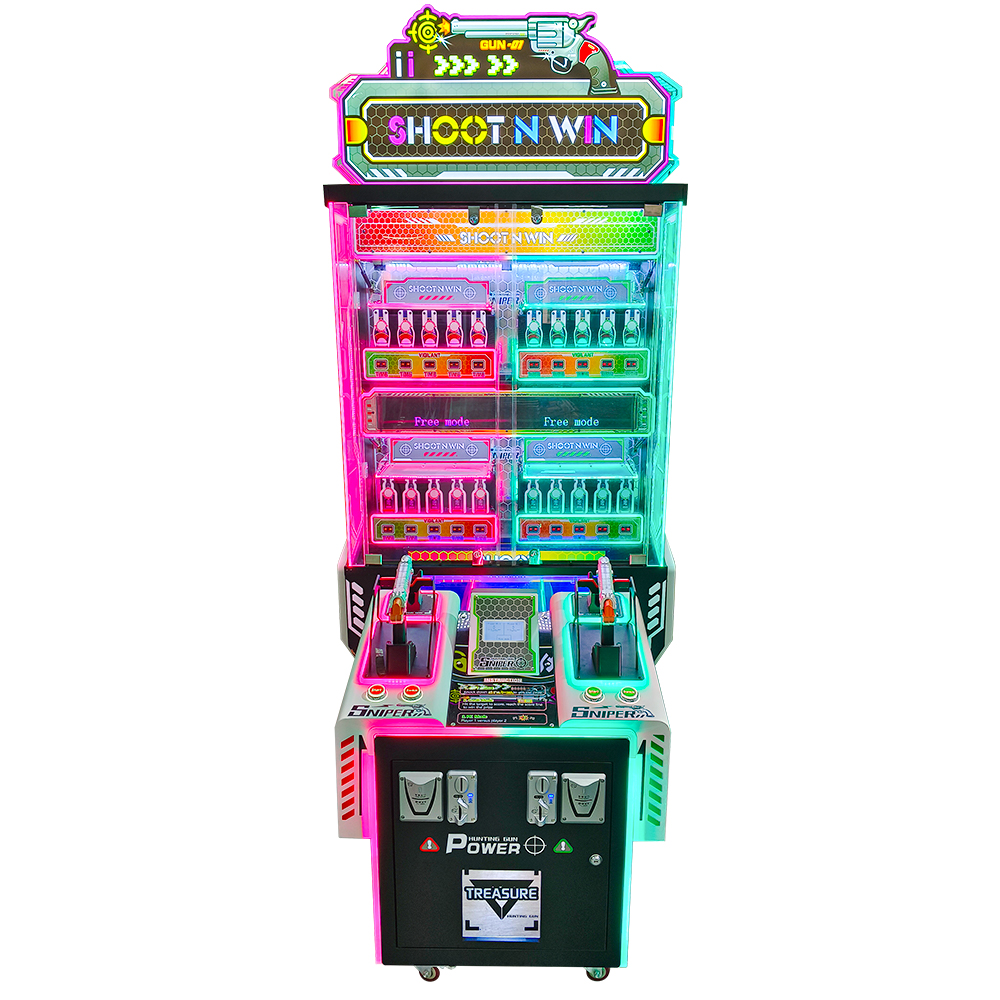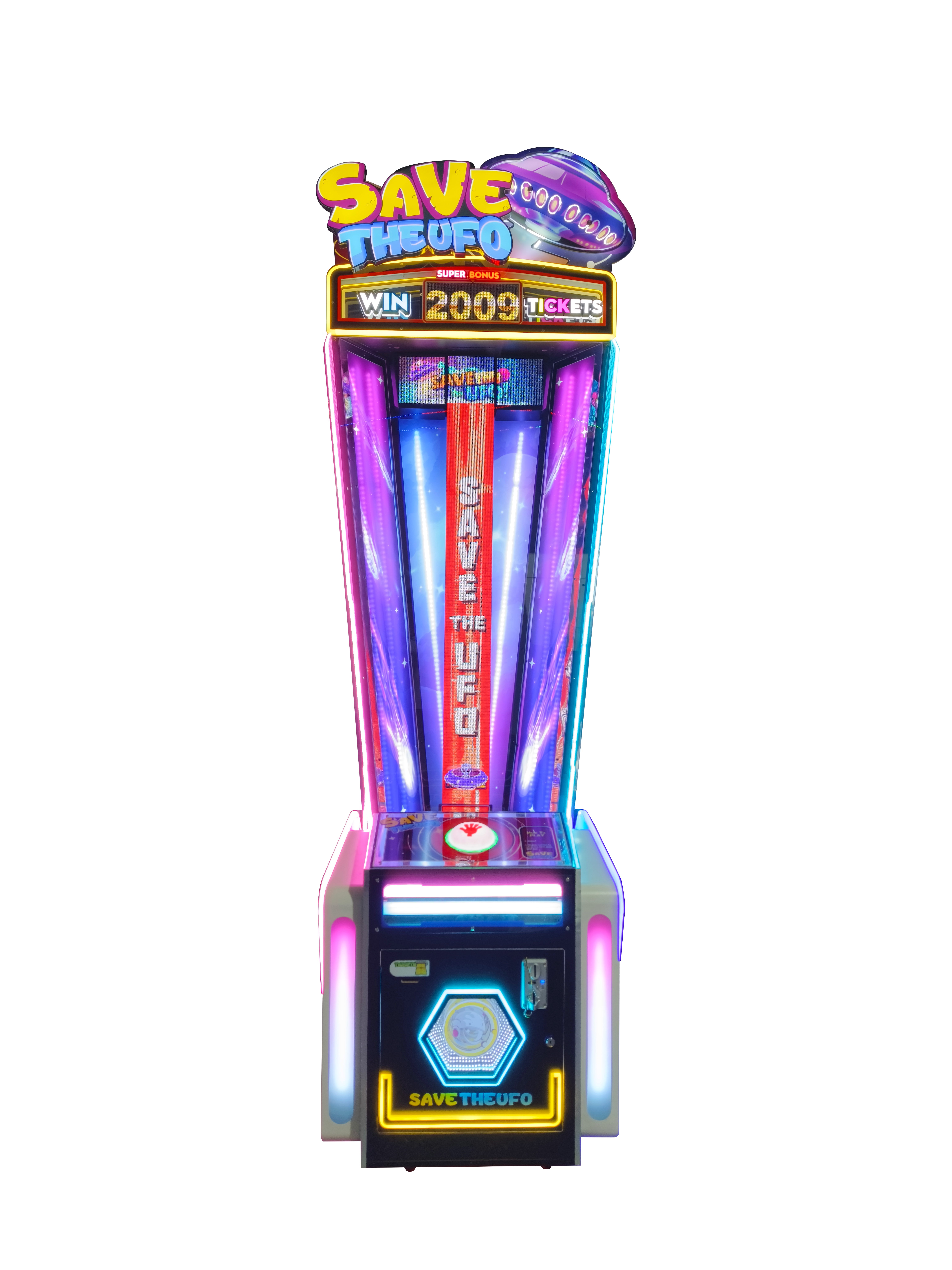Arcade games come in various types, each offering unique experiences. The most common include racing games, which feature cars or motorcycles and generate up to 25% of arcade revenue. Fighting games, like Street Fighter, are highly competitive and popular for multiplayer modes. Shooting games, often featuring light guns, offer immersive, fast-paced action. Sports games, such as basketball or air hockey, allow players to simulate real-world activities. Redemption games, like claw machines or ticket dispensers, reward players with physical prizes, encouraging repeat play.
Table of Contents
ToggleClassic Arcade Games
The world of arcade games has some defining hallmarks, games that forever changed the way people would play video games and set down the basic gameplay mechanics that is still influential to this day. Warm Up there These games are famous for their elegant and uncomplicated play and the nostalgia they awake.
Released in 1980, Pac-Man sold 430,000 units worldwide and at one time became the highest-earning video game ever, illustrating how many people you needed to please to run away with the cash. This was a statement to the fact that innovative, no-BS design centering around a character eating dots and fruit in a maze chased by ghosts was a force to be reckoned with. You had to navigate that maze of dots, and power pellets that let you turn the tables briefly by allowing you to hunt ghosts instead.
Another full house is Space Invaders, which began in 1978. Adding rows of descending aliens or sprites to the player’s ship introduced new game play dynamics. It was this game that set the blueprint for what was to come with shooters and helped (just like with a certain earlier racing game) to spark the explosion of the arcade industry in the late 1970s. How about by the end of 1982, when it had swallowed $2 billion in coins, giving you a sense of its cultural and economic impact.
Asteroids (1979) was a vector game and set the stage for games in a different game play universe with all vectors and a physics-based play. So in this version you are guiding a spaceship through an asteroid belt where the asteroids split into pieces when shot at, adding an additional strategic element to the game.
Shooter Games
What started as simple single-screen video games later developed into multiple-direction games with shooting forcing players to shoot as fast as possible in numerous First-Person Shooter games. These games combine both strategy and quick reflexing actions with the players.
Asteroids, one of the early classics, they set a 2D space where you are a space ship trying to move and survive through an asteroid field. It was revolutionary at the time of its 1979 release for its use of vector graphics which gave it a very unique, crystal clear visual appearance as opposed to the raster graphics which were commonly used at the time.
The shooter genre was also advanced by Galaga, released in 1981 with improved “enemies” and coming after a gapbreak since Space Invaders. This latest release is the third in a successful trilogy from Namco, commenced by Galaxian. Aliens come with complex, moving formations, not unlike the static rows of attackers in earlier games like Space Invaders.
With even modern ports of these old arcade shooters now featuring 3D environments and all sorts of whizzy immersive bullshit.StObject In a 1st-person shooter such as the game “Time Crisis,” players use a pedal system in which the cover mechanic is built into the physical action part that makes simple, yet powerful, use of physical engagement in realistic response. The light gun enabled players to aim at the display screen itself, providing a more true-to-life depiction of what it would be like to shoot something.

Fighting and Side-scrolling games
Fighting and Side-scrolling games perfectly encapsulate crude, hand-to-hand combat in a digital arena, providing its players with fast-paced, close-quarter brawls backed by subtle yet complex combo systems. These games are known for their competitiveness and high skill level.
Street Fighter II, released in 1991, started a fighting game revolution by introducing a multi-character format and different moveset for each character, a feature that has since become a genre standard. Its monumental success eventually saw the game earn more than $2.3 billion by 1995, making it one of the highest-grossing games in both arcade and gaming culture history.
The 1987 release of Double Dragon is often credited with doing a lot to establish the beat ’em up genre, in which players work their way through a level using melee combat to battle hordes of enemies. This was a big deal at the time as two-player simultaneous action was virtually unheard of and added a degree of social gaming that would not have been particularly prevalent in the arcade scene otherwise.
Modern fighting games in arcades now have real-time 3D graphics and characters that have more depth and substance. Games like Tekken and Virtua Fighter are 3D fighting games, forcing players to move around a 3D space while also adding a depth to the combat system.
Sports and Racing Games
In the smooth fields of Madden and Forza, the gritty tapestry of arcades hung back further to do two things: to convey the pulse-pounding thrill of playing physical sports and driving fast, when you need quick hands and tactical wits. They offer a more well-rounded experience and often come with physical interfaces such as steering wheels, pedals, and sports equipment replicas.
When NBA Jam was released in 1993 it made waves in the sport arcade games with the realistic elements of basketball but then turning them up to 11 with it’s mad universe physics and moves such as the iconic sky-high dunks. It was a huge hit – the most successful game in the history of arcade games making a billion dollars in quarters in its first year- and it proved that sports melded with arcade accessibility really was bigger than both.
Daytona USA (1994 – Racing)Daytona USA was a revolutionary racing game that debuted in 1994 as it included state-of-the-art graphics and force feedback steering, offering arcade players a true feeling of virtual reality right at their fingertips. It was one of the top-grossing arcade games for years after its establishment, largely due to its elaborate tracks and strong, familiar table controls.
Modern sports and racing games can now be played on the web, with real competitors having the ability to play with each other live, without having to get collectively. And these improvements have ensured that the genre has stayed fresh at the top of the arcade gaming technology.

Dance and Music Games
In this era, arcade transforms into a colorful stage on which rhythm and movement meet each other through dance and music games, meanwhile players need to follow musical cues and make physical movements. These games stake out their territory as games con the perfect encapsulation of physicality and amusement, frequently the flag cooperation piece of arcade venues.
In 1998, Tennuby released Dance Dance Revolution (DDR) and forever changed the arcade gaming world by forcing people to step on a dance pad in rhythm with arrow cues on the display. DDR achieved cult status within months of its release, and it quickly spawned a fervent community who played the game at various arcades throughout the world. This not only made arcadegaming more fun and interactive, but it served to keep people active and awayfrom their T.V screens.
After DDR gained popularity due to the dimension shifting technology of ascension and revolution, additional innovative musical games were developed, including Beatmania, and Guitar Hero Arcade.It also provides players with a new interface. The series went on to expand the genre, adding “instrument” controllers to simulate playing musical instruments, bringing a new and more creative way of gaming into the arcades.
Dance games continue to evolve with modern haptic and VR technology to improve the sensibility and immersiveness of the player with the game. With the genre being as fresh as it is, it’s easy to see it attracting the masses, thanks in no small part to its ongoing innovation and the uniquely performative aspect of the genre that allows players to move and groove.








